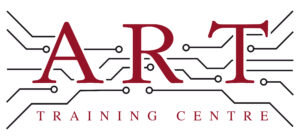Definition
Minimum Electrical Clearance is the shortest distance between two conductive parts that ensures electrical safety and prevents unwanted electrical arcing or short circuits. It is a critical concept in electronics manufacturing, particularly regarding printed circuit boards (PCBs) and components. Maintaining proper clearance is vital for reliable operation and safety in electronic devices.
How It’s Used in the Industry
In electronics assembly, Minimum Electrical Clearance is applied during the design and layout of printed circuit boards (PCBs). Engineers calculate the necessary distances between conductive traces and components to prevent electrical faults. During soldering, technicians must ensure that solder joints do not bridge gaps that could violate these clearances. In rework and inspection, professionals check for compliance with clearance standards, as violations can lead to device failure. Understanding and adhering to these clearances is essential for both trainees and experienced technicians, as it directly impacts device reliability and safety.
History & Origins
Minimum Electrical Clearance became common in electronics manufacturing in the mid-20th century as the industry grew and the complexity of circuits increased. Early adoption was influenced by the need for reliable performance in military and aerospace applications. Over time, organisations like IPC developed standards that specified minimum clearances based on voltage levels and environmental conditions, making it a critical aspect of modern electronics design and manufacturing practices.
Variations
Variations of Minimum Electrical Clearance include different standards based on application requirements, such as high-voltage versus low-voltage circuits. For instance, clearances in high-voltage systems are greater than in low-voltage applications to prevent arcing. Additionally, there are specific guidelines for different materials and environmental conditions, such as humidity and temperature. Understanding these variations helps technicians ensure compliance and safety across various electronic applications.
Modern Applications
Today, Minimum Electrical Clearance is integral to electronics production and repair, especially in surface mount and through-hole technology. It is essential for ensuring product quality and reliability, as well as compliance with IPC standards. In advanced assembly processes, such as multi-layer PCBs, maintaining proper clearances is even more critical. Technicians are trained to apply these principles to prevent faults and enhance the longevity of electronic devices.
Practical Tips & Training
When working with Minimum Electrical Clearance, ensure to use appropriate inspection tools, such as calipers and clearance gauges, to verify distances. Always follow safety protocols to prevent electrical hazards. Structured training and certification in electronics are invaluable, as they provide foundational knowledge and practical skills to understand and apply clearance standards effectively. Regularly reviewing IPC guidelines can also enhance compliance and quality in electronics manufacturing.


